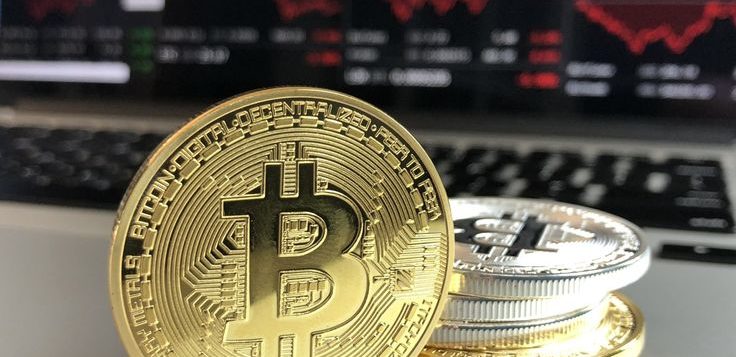Every year around this time I attend a small, private event to break bread with some of the most invigorating people I know.
There’s only about 100 people in the room– but they’re all at the top of their game… business and intellectual leaders from a variety of industries.
And we gather each year to build relationships with one another and hear about some cutting edge ideas that are usually 2-3 years from hitting the mainstream.
This past weekend’s event, for example, showcased some revolutionary medical advances, including an approach that targets specific proteins to treat afflictions that are caused by, or exacerbated by inflammation– including cancer, arthritis, etc.
It’s really exciting to see what’s on the near horizon with medical technology.
Among other speakers was also a prominent crypto evangelist who spoke about what the future of cryptocurrency will look like in the coming years.
No major surprises– he told the audience that crypto is still in its infancy and has an incredibly bright future.
I agree. And his analogy to illustrate this point was looking at the growth of the tech sector from the early 1980s through today.
Back in late 1970s before personal computers became ubiquitous, there was serious doubt (even within the industry) that consumers would ever adopt the technology.
Ken Olsen, founder of Digital Equipment Corporation, famously stated in 1977 that “there is no reason anyone would want a computer in their home.”
That very year saw the introduction of the Apple II, Commodore PET, and Tandy TRS-80 personal computers, all of which proved extremely popular with consumers.
By 1982 the computer replaced “Man of the Year” by Time Magazine, and several dozen companies had jumped into the industry designing hardware and peripherals.
Technology stocks began to rise, and shares of companies like IBM and Hewlett-Packard quickly doubled in the early 80s.
But at that point a bunch of investors and market analysts began musing that the technology trend had reached its peak.
They had no idea what miraculous advances were still to come, and instead viewed the entire sector as an expensive fad.
Share prices languished for several years– IBM stock went nowhere from 1983 until 1986.
But then Microsoft went public in March of 1986. And suddenly the market realized there was a whole new component to technology: software.
Microsoft’s stock price exploded, doubling in its first twelve months, and increasing 10x in four years.
But by the early 1990s the tech boom had once again run out of steam. Investors thought that the big software trend was totally overdone and that there really wasn’t much room for the tech sector to keep growing.
Share prices languished again, as the market had no idea what was coming next.
Then, in the mid 1990s, people caught wind of this thing called the “Internet”, which back then they referred to as the “Information Superhighway”.
People realized there was yet another component to the tech boom. And so the investment bonanza continued.
This cycle has repeated itself again and again… with mobile, social media, e-commerce, etc.
All along the way, investors occasionally went through periods believing that technology had nowhere else to grow… or that it was all just a fad. They never had a clue what was coming next.
This is a pretty reasonable comparison to cryptocurrency.
It’s similar to the early 1980s when people thought that these technologies were just silly fads… or that the tech stocks were already expensive and they had missed the opportunity to invest.
A lot of folks probably felt that way about Microsoft stock in 1990, after it had increased 10x from its IPO price four years earlier: “I missed it, the opportunity is gone.”
Microsoft’s share price, of course, would grow by another 10x before the end of the decade. And it’s up 100x through today.
People are saying the same thing about crypto. It’s either too expensive to buy (“I missed it”), or it’s some sort of passing fad that will eventually go away.
Most likely neither one of those is true.
Now, here’s where I started to strongly disagree with this past weekend’s speaker.
At the end of his remarks, he told the audience unequivocally that “Bitcoin will go to $40,000 this year.” (And some attendees in the room actually bought Bitcoin based solely on this statement…)
Certainly there’s some data to support the assertion. Various cryptofinance companies are working on ways to open up more investment in the sector to large banks and institutions.
Right now, crypto is dominated by small investors. If you want to by $1,000, or even $1 million, worth of crypto, you can.
But if you’re a large fund with $50 billion under management, and you want to buy hundreds of millions of dollars worth of cryptocurrency, it’s REALLY difficult.
The infrastructure doesn’t exist. Not yet. But they’re working on it.
The banks and funds themselves are designing their own platforms to trade crypto, and even NASDAQ is getting in on the game.
Once they succeed, there could be a flood of institutional capital into cryptocurrency. Bitcoin could certainly benefit. Or perhaps it won’t.
Remember the old quote from F. Scott Fitzgerald: “The test of a first-rate intelligence is the ability to hold two opposed ideas in the mind at the same time, and still retain the ability to function.”
Bottom line– you have to be able to understand both sides. There are ALWAYS risks.
Specific to Bitcoin, for example, a truly honest assessment of the core software may lead to the conclusion that it’s technologically inferior to newer tokens and coins.
It’s also possible that large investors may bypass Bitcoin altogether and buy newer generation tokens.
No one has a crystal ball, especially in crypto. And it’s inappropriate to make blanket assertions that the price will reach X by date Y.
Understand the obvious big picture trend. But also understand the risks. Then, based on the balance of the two, and a long-term view, make a RATIONAL decision to invest.
Read more at: FX Street







